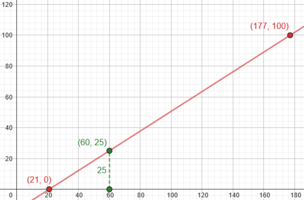Darklandscape
New member
- Joined
- Aug 19, 2023
- Messages
- 1
Hi, I don't know if what I am trying to do is possible, but here it is.
I want a equation that would make the 1st number as close to 0 as possible and the second number as close to a 100 as possible.
1. 21
2. 177
And one for these numbers
1.82
2. 214
I want a equation that would make the 1st number as close to 0 as possible and the second number as close to a 100 as possible.
1. 21
2. 177
And one for these numbers
1.82
2. 214

